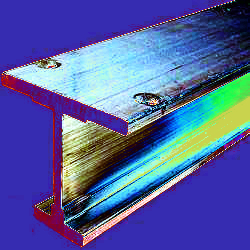Scientists test next-gen steel
 Research engineers are working on the next generation of steel and metal alloys.
Research engineers are working on the next generation of steel and metal alloys.
Experts are working to overcome the problem of hydrogen alloy embrittlement, which has led to catastrophic failures in major engineering and building projects.
UQ Centre for Microscopy and Microanalysis Director Professor Roger Wepf says the problem has been recognised for almost 140 years.
“The current generation of these metals can suffer hydrogen embrittlement, where they become brittle and fracture due to the accidental introduction of hydrogen during manufacture and processing,” he said.
“A major example of alloy embrittlement occurred in 2013, when bolts in the eastern span of the San Francisco-Oakland bridge failed tests during construction.”
Professor Wepf said hydrogen was extremely volatile and diffused quickly.
“Our research collaboration has, for the first time, localised and visualised hydrogen in steels and alloys,” he said.
“This is essential for the development of new alloys with greater endurance.”
“We have shown that it’s possible to localise hydrogen at atomic resolution – at the scale of a single atom – or at a nanometre (less than one-billionth of a metre) scale by combining different technologies in a closed and protected workflow.
“These include state-of-the-art cryo electron microscopy freezing techniques, low-temperature sample preparation in a cryo focused ion beam microscope, and inert cryo-transfer.”
The latest research has been published in Science.








 Print
Print